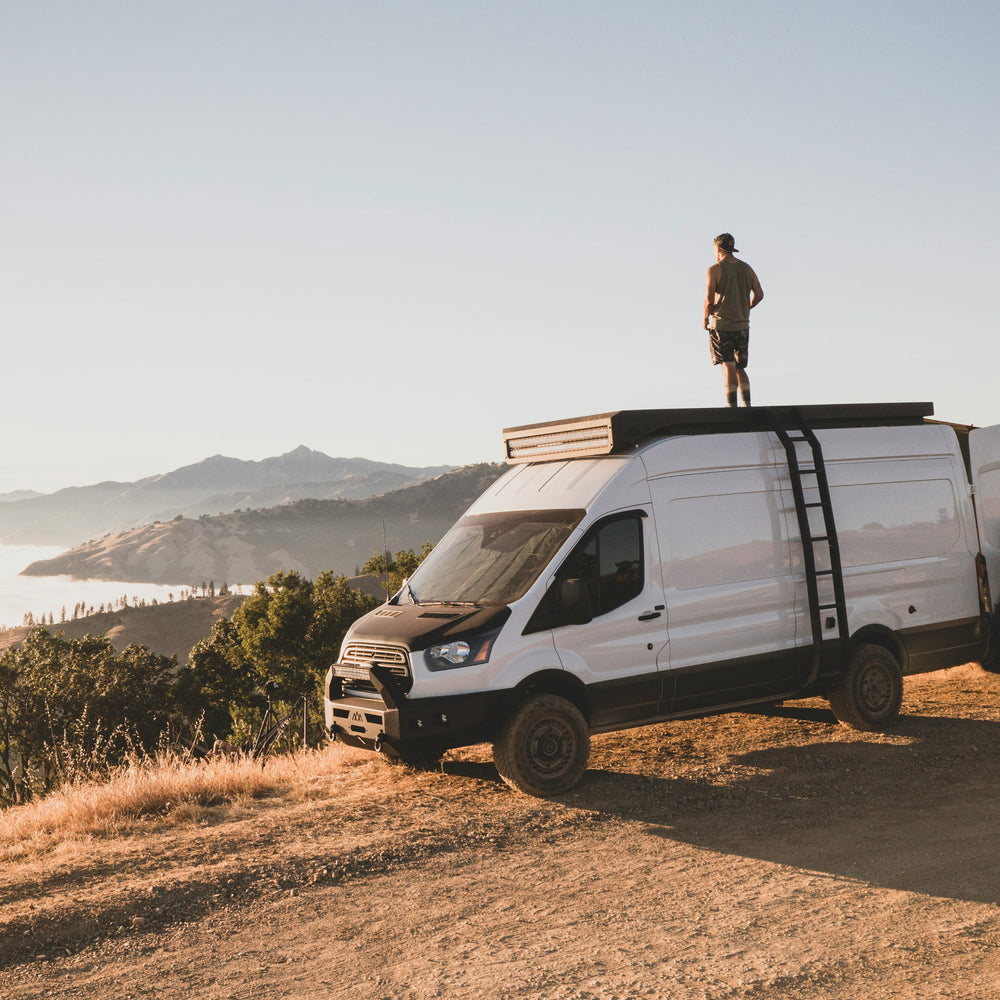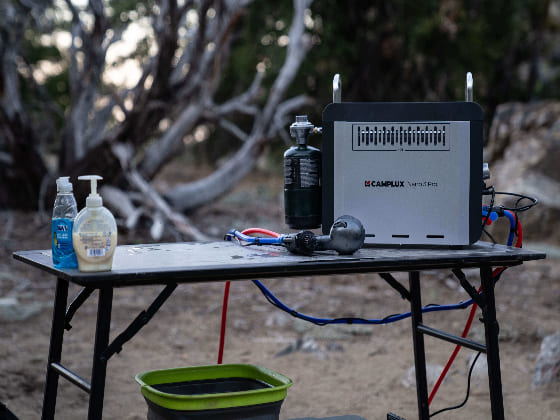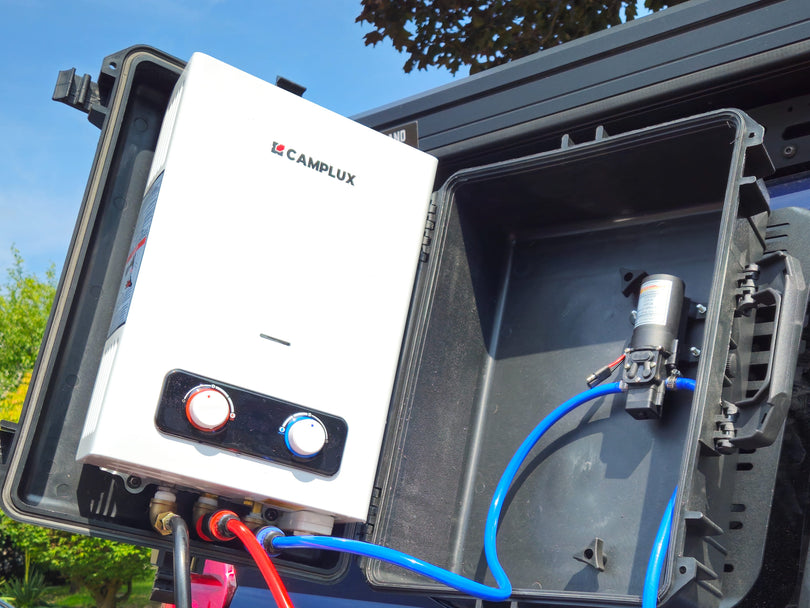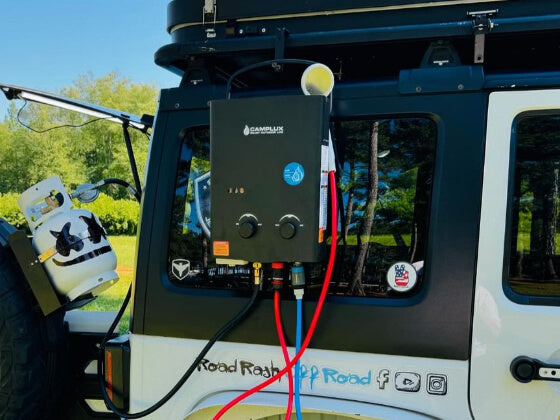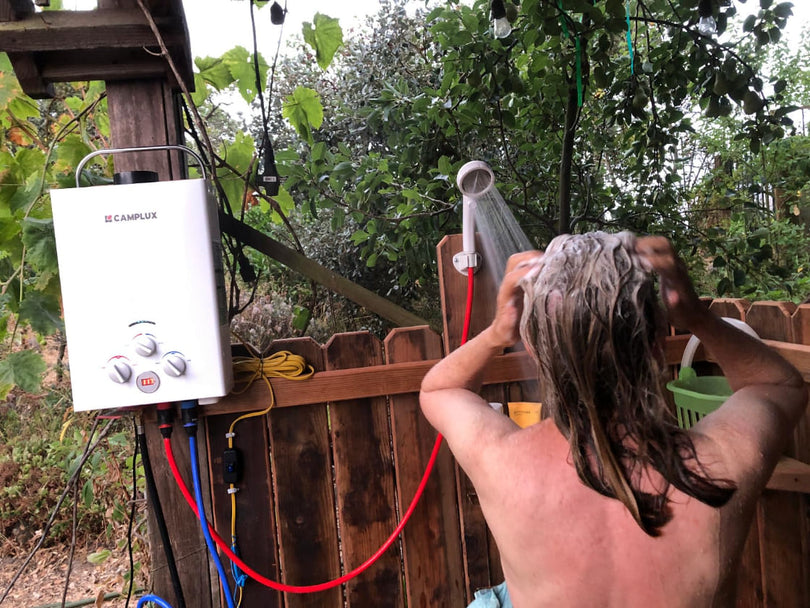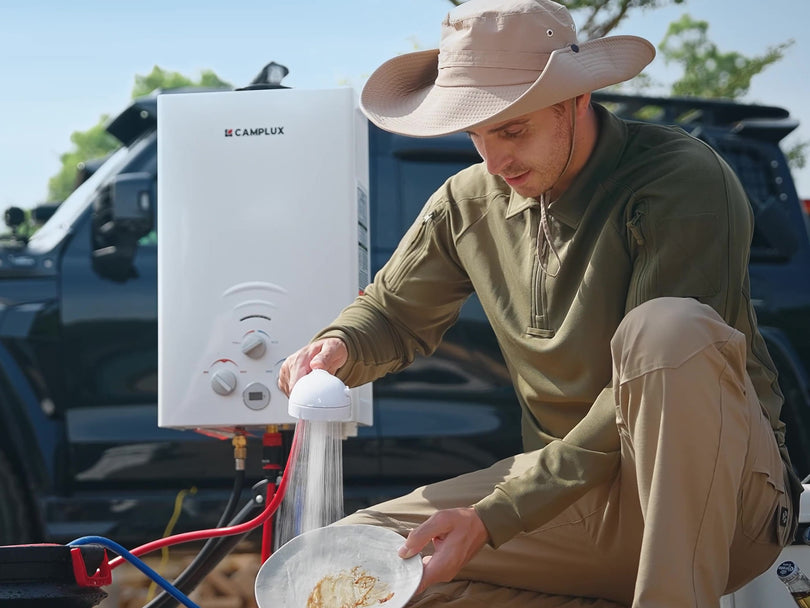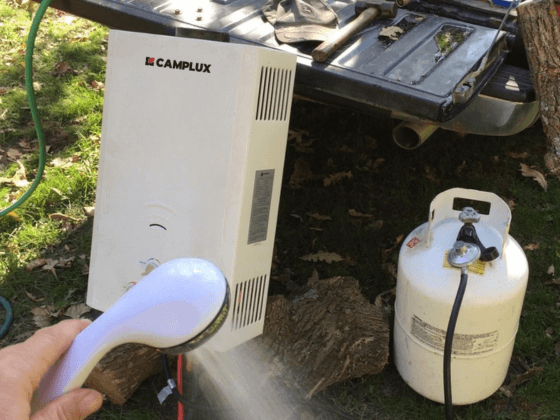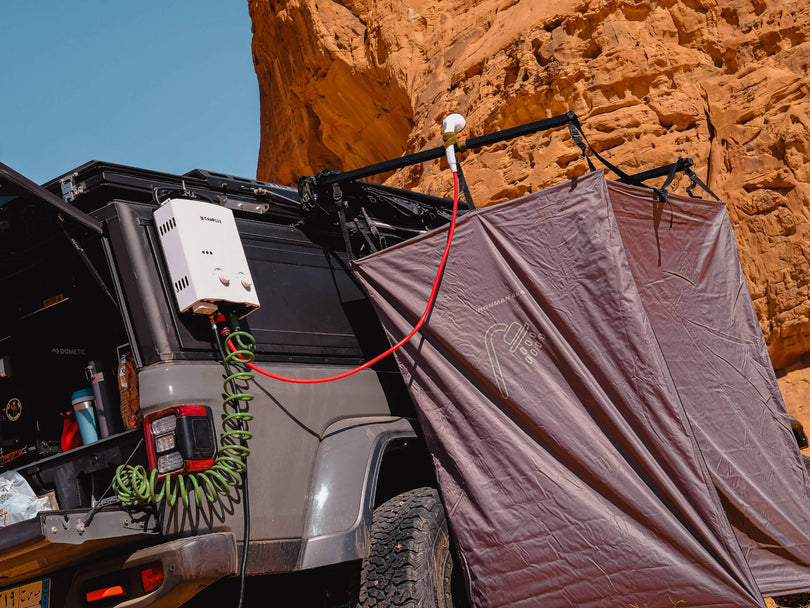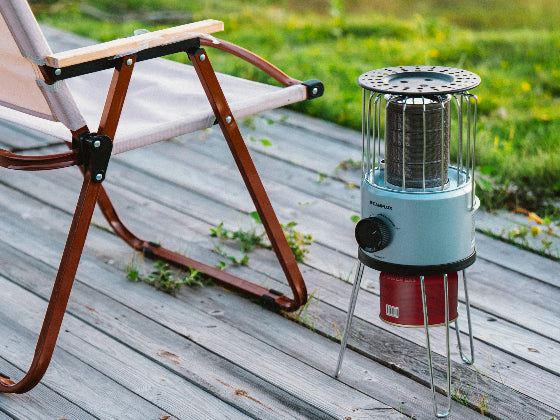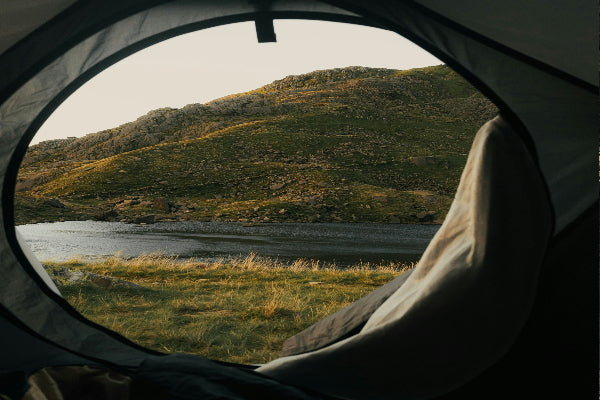Winter camping in the UK can be magical – frosty mornings in the Peak District or a crisp night by Snowdonia – but the cold can pose challenges for your outdoor gadgets. If you rely on a Camplux portable water heater for hot showers or washing up on your camping and caravan adventures, proper winter care is a must. In this guide, we'll walk you through practical strategies to protect your Camplux water heater during cold weather and how to drain and store it for the off-season. With a few simple steps, you can winterise your water heater to prevent freeze damage and ensure it's ready to give you instant hot water whenever you need it.
Protecting Your Camplux Water Heater for Winter Use
British winters mean rain, frost, and occasionally snow – conditions that require a bit of extra TLC for outdoor gear. The good news is that with some precautions, you can keep using your Camplux water heater through the colder months. Here are key tips to help your water heater brave the winter while staying safe and efficient:
Shield it from the elements: Whenever the water heater isn't in use, keep it covered or moved to shelter. A weatherproof cover or even just bringing the unit under an awning or into a shed can prevent rain, snow, and sleet from settling on it.Models like the Camplux BW264C come with a built-in rain cap that helps keep out rain and debris, which is great for British weather. However, you should still cover the water heater body when it's cooled down, to keep moisture and dirt off.This will prevent corrosion and protect the unit's exterior. Always remove any cover before operating (never run the water heater with a cover on!).
-
Position it wisely: If you're heating up water on a frosty morning, try to place your water heater in a spot protected from direct wind. Cold winds can make the burner work harder and rob heat. Set the water heater at a safe height (off the freezing ground or snow) and on a stable surface. For instance, if you're using a Camplux Nano 3 Pro, you can put its compact frame on a raised platform or table rather than the icy ground. Keep in mind these gas water heaters need ventilation (they're meant for outdoor use only), so don't fully enclose them – a three-sided windbreak or under a roof overhang is fine, but never in a sealed tent or indoors.
-
Use the right gas: Winter campers in the UK often know this trick – use propane instead of butane in cold weather. Butane gas can struggle to vaporise once temperatures approach 0 °C, meaning your water heater might not get any fuel if it's freezing outside. Propane, on the other hand, works reliably in sub-zero temperatures (it vaporises down to about –42 °C). All Camplux propane water heaters (including the 5 L models like the Camplux AY132 and Camplux AY132B) are designed to run on LPG – just make sure you have a suitable 27 mm clip-on propane regulator (or swap to a 30 mbar regulator for butane, if you ever use butane in warmer seasons).Using propane in winter will ensure your water heater lights up and stays running when you need it.
-
Prevent freezing inside the water heater: Perhaps the most important winterising step for continued use is draining water after each use. Never leave water sitting in the water heater overnight in freezing weather, or it may turn to ice and crack the internal pipes. Camplux water heaters are built with this in mind – most models include a drain plug to let you empty out water once you're done. For example, the Camplux AY132 series has a handy drain plug at the bottom; simply unscrew it to drain residual water from the heat exchanger and pipes. This simple step keeps water from freezing inside and damaging the unit.Do this whenever temperatures will drop near freezing after you've used the water heater. It only takes a few seconds and can save your water heater. (Tip: keep the drain plug open until you next use the water heater, so any little droplets left can expand if they freeze – better to drip out than to burst anything.)
-
Insulate hoses and prevent ice build-up: In very cold conditions, also disconnect and empty the water hose and shower head. Drain the hose completely (lift it high to pour out water) so it doesn't freeze into a solid pipe. You can wrap the hose and gas regulator in insulation (even a towel or foam pipe lagging) to keep them from icing up while you shower. Never insulate the water heater's exhaust area, though – the top vent (and exhaust slots) must stay clear to vent gases. If you have the larger Camplux BW264C 10 L water heater, its exhaust has that rain cap – make sure it isn't covered by snow. Clear any snow off the top before using, and check that the vent is not blocked by ice.

The Camplux Nano 3 Pro is a compact unit with a built-in pump and battery. In winter, keep its battery charged and don't let water freeze in the pump or water heater. Drain both after use and avoid leaving the pump submerged in icy water overnight.
The Camplux AY132 (5 L) is a popular portable water heater for camping. Always disconnect the shower hose and drain the unit in cold weather. This model has a drain plug for easy emptying – a crucial feature for winterising your water heater.
The Camplux AY132B variant features a foldable handle and the same 5 L capacity. Its rugged design is great for UK outings year-round. Protect it from frost by storing it under cover when not in use, and use the drain plug to remove water after each shower.
The Camplux BW264C (10 L) is built for higher demand – perfect for campsite groups or horse washing – and it comes with a rain cap for weather protection. Even so, in winter you should drain it after use to prevent any internal freeze damage.Its larger size can produce more heat, but always take the same precautions against freezing.
-
Keep your gas bottle warm (ish): Propane will vaporise in cold weather, but extreme cold can reduce pressure. You might find your gas regulator or bottle frosts up during extended use in very low temperatures. To mitigate this, ensure the bottle is not sitting on frozen ground; placing it on a piece of wood can insulate it a bit. Never apply direct heat or a flame to a gas cylinder, though! Just keeping it out of the wind or in a insulated gas bottle cover can help maintain gas flow. This tip is more for deep winter camping (e.g. if you're up in Scottish Highlands in January). For most UK conditions, a standard propane bottle will do fine.
-
Check and replace batteries: Most Camplux portable water heaters ignite with batteries (the Nano 3 Pro has a rechargeable battery, while models like AY132 and BW264C use 2 × D-cell batteries). Cold weather can weaken battery output. If you've been using the same batteries all summer, consider replacing them before a winter trip so the ignition spark is strong. As a backup, keep spare D-cells in a warm place (inside your jacket or sleeping bag) so you're not caught with dead ignition when it's freezing out. For the Nano's lithium battery, make sure it's fully charged; lithium-ion batteries don't like sub-zero temps, so if possible, charge and store the Nano's battery indoors. You can always use the 12 V car adapter on the Nano 3 Pro as an alternative power source if the internal battery is struggling in the cold.
-
Monitor performance: Pay attention to how your water heater is performing in the cold. If you notice weaker output or sputtering, check for ice or blockage. Is the water source partially frozen or the inlet filter clogged? Is the gas pressure okay? Regularly inspect the water filter (if your model has one at the inlet) to ensure ice or debris isn't restricting flow. Also, don't force the water heater to reach its max temperature with icy-cold water – it might not achieve summer-like temperatures if your water source is near freezing. Instead, reduce the water flow (use the water flow knob) to give the water heater more time to heat the water. This way, you'll still get a nice hot shower even when the water coming in is ice-cold – just at a lower flow rate.
By following these practices, you can confidently use your Camplux water heater in autumn and winter. Many campers and caravaners do winter camping in the UK, and a portable hot water system is a fantastic comfort – imagine coming back to your camper after a snowy hike and having a hot shower ready! Just remember that prevention is better than cure. A few minutes spent drying and storing your water heater properly each day will prevent the heartache of finding it cracked by frost.
(For more tips on using your water heater safely and effectively, check out our Camplux installation guide for set-up advice and gas safety tips to ensure you're operating everything correctly. Also, see our DIY vs. Professional Installation article if you're unsure about setting the system up yourself or need an engineer's help.)
Draining and Storing Your Camplux Water Heater for Winter
When the camping season winds down or if you don't plan on using your water heater during the coldest months, it's important to winterise it for storage. Proper shutdown and storage will protect your water heater from freeze damage and also ensure a hassle-free start-up when you bring it out next spring. Follow these steps to drain and store your Camplux water heater during the off-season:
-
Turn it off and detach from gas: Switch off the water heater and close the gas supply. If you're using a propane cylinder, turn the cylinder valve off first. Disconnect the gas regulator from the cylinder (this ensures no gas can flow). It's good practice to also disconnect the regulator from the water heater unit for storage, especially if storing indoors, so there's no chance of a gas leak.
-
Shut off water and remove connections: Turn off your water source (pump or tap) and disconnect the water inlet hose from the water heater. Also disconnect the shower hose and shower head from the outlet. At this point, the water heater unit should be completely isolated – no gas, no water attached.
-
Open the drain plug and let water out: Almost all Camplux outdoor models have a dedicated drain plug (usually a plastic screw cap) underneath or on the side. Unscrew the drain plug completely. Water will start trickling (or gushing) out – that's normal. Tilt the water heater in different directions to help all the water inside find its way out of the drain hole. For example, tilt a portable unit like the AY132 forward and backward to empty both the heat exchanger and the outlet pipe. Shake it gently to dislodge trapped droplets. The goal is to get every last bit of water out, because even a small amount can freeze and expand. Take your time – you might be surprised by a few extra drips after a minute, which you definitely want out and not freezing inside. (If your model has no drain plug – some older or smaller devices might not – you may have to just invert the whole unit to pour water out of inlet/outlet. Luckily, all the Camplux models highlighted here do have drain plugs for easy winterisation.
-
Drain the hoses and pump: Don't forget your accessories. Empty the water inlet hose, outlet hose, and shower head. Swing the hoses around to fling out water (as if you're getting water out of a garden hose). If your kit has a water pump (like the submersible pump included with the Nano 3 Pro), make sure to run it briefly out of water to push out any water inside it – do not let water sit in the pump or it could freeze and damage it. After running it dry for a second, switch it off, then store the pump somewhere it won't freeze (inside the house is ideal). Coil up all hoses neatly once they're drained.
-
Remove batteries: Take out the batteries from the water heater's ignition (if it uses disposable batteries). This prevents any corrosion or leakage during long storage, and also ensures the ignition circuit is fully off. For the Nano 3 Pro, make sure the internal battery is turned off (and consider storing the unit in a place where the battery won't be exposed to sub-zero temperatures for prolonged periods). You might even store the Nano's battery pack separately indoors.
-
Give it a quick clean (optional): If you have time, wipe down the water heater's exterior to remove mud, dust, or grease. It's much nicer to unpack a clean unit next season than a dirty one. Plus, dirt can hold moisture, so cleaning it off is another way to reduce rust risk. Check the burner area (through the slots) for any debris like spider webs or sediment; clear that gently with a soft brush or compressed air. Ensure everything is dry before you pack it away.
-
Store in a dry, frost-free place: Ideally, keep your Camplux water heater indoors over winter – in a garage, shed or cupboard where it won't be exposed to extreme cold or moisture. Storing the water heater in a dry, sheltered place is “especially important if you're winterizing your Camplux water water heater”. If indoor storage isn't possible, at least avoid leaving it out in rain or snow. Use the original box or a container to protect it from dust and knocks. You can also wrap the unit in a towel or bubble wrap for a bit of insulation and cushioning. Make sure the drain plug remains open (or loosely fitted) during storage so if by chance any moisture is left, it can escape or ice can expand outward. Keeping it loosely closed (just finger-tight) will at least keep insects or dirt out while allowing air exchange.
-
Store accessories together: Keep the hoses, pump, shower head, gas regulator, and any other accessories together with the water heater so you don't lose track of anything. It's frustrating to start a spring camping trip and not find the shower head or adapter you need. Stash everything in one box or bag. Also, now is a good time to inspect these parts – look at the O-rings and washers in your connections; if any are cracked or worn, note to replace them before next use.
-
Don't forget maintenance before next use: Once winter's over and you're ready to use the water heater again, do a quick check during setup. Reinsert new batteries, tighten the drain plug back in, and reconnect all hoses. It's wise to fill the water heater with water before igniting (to ensure the heat exchanger isn't run dry). Also, do a test run in spring to verify everything is working. If you did the steps above, your Camplux should fire up just fine. Check for any gas leaks with soapy water on connections (standard safety) and you're all set for another season of hot water outdoors. For a refresher on maintenance, you can read our Routine Maintenance Tips which covers annual servicing and cleaning to keep your water heater in top shape.
By properly draining and storing your water heater, you're not only preventing damage, but also extending the life of your appliance. Camplux water heaters are built to last, and a little winter care goes a long way. When you pull out your Camplux AY132 or Nano 3 Pro next summer, it will be just as you left it – ready to deliver instant hot water for your adventures.
Stay Safe and Enjoy Year-Round Hot Water
With the right precautions, your Camplux portable water heater can be a year-round companion, even in the fickle British weather. Winterising is all about keeping water out of places it could freeze, and protecting the unit from harsh conditions. We've covered how to keep using your water heater through the winter (for those brave winter campers!) and how to pack it away when you're done. By following these tips, you'll avoid the common pitfalls of winter (like frozen pipes or cracked equipment) and ensure a long life for your water heater.
Remember, a bit of planning can save you from chilly disappointments. Whether it's insulating your setup for a New Year camping trip or carefully storing the water heater until spring, you now have the know-how to do it right. So go ahead and enjoy that hot cuppa or warm shower on a cold morning – your Camplux has you covered, summer or winter!
